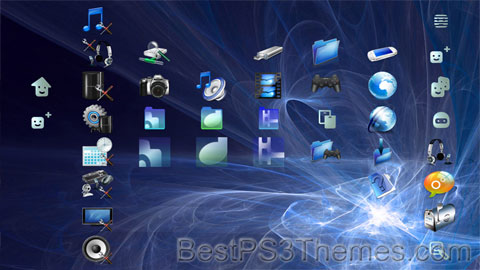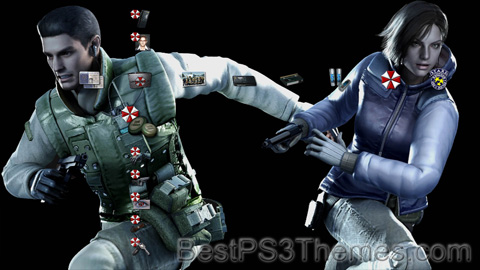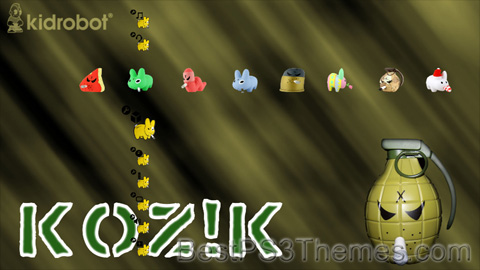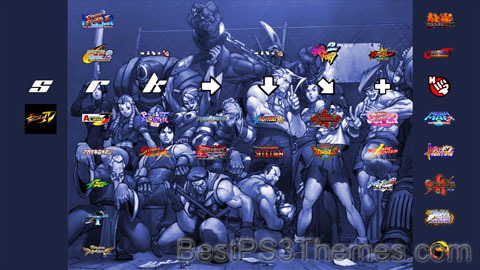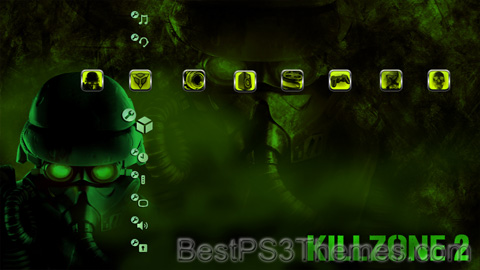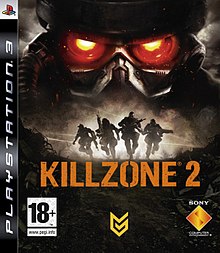Tron theme by opy01
Download: tron2.0.p3t

(1 background)
| Tron | |
|---|---|
 Theatrical release poster | |
| Directed by | Steven Lisberger |
| Screenplay by | Steven Lisberger |
| Story by |
|
| Produced by | Donald Kushner |
| Starring | |
| Cinematography | Bruce Logan |
| Edited by | Jeff Gourson |
| Music by | Wendy Carlos |
Production companies |
|
| Distributed by | Buena Vista Distribution |
Release date |
|
Running time | 96 minutes |
| Country | United States |
| Language | English |
| Budget | $17 million |
| Box office | $50 million[1] |
Tron (stylized as TRON) is a 1982 American science fiction action adventure film written and directed by Steven Lisberger from a story by Lisberger and Bonnie MacBird. The film stars Jeff Bridges as Kevin Flynn, a computer programmer and video game developer who is transported inside the software world of a mainframe computer where he interacts with programs in his attempt to escape; it also stars Bruce Boxleitner, David Warner, Cindy Morgan, and Barnard Hughes. Tron, along with The Last Starfighter, was one of cinema's earliest films to use extensive computer-generated imagery (CGI).
The inspiration for Tron dates back to 1976, when Lisberger became intrigued with video games after seeing Pong. He and producer Donald Kushner set up an animation studio to develop Tron with the intention of making it an animated film. To promote the studio itself, Lisberger and his team created a 30-second animation featuring the first appearance of the title character. Eventually, Lisberger decided to include live-action elements with both backlit and computer animation for the actual feature-length film. Various studios had rejected the storyboards for the film before Walt Disney Productions agreed to finance and distribute Tron. There, backlit animation was finally combined with the 2D computer animation and the live action.
Tron was released on July 9, 1982. The film was a moderate success at the box office, and received positive reviews from critics, who praised its groundbreaking visuals and acting but criticized its storyline as being incoherent. Tron received nominations for Best Costume Design[2] and Best Sound[3] at the 55th Academy Awards. It was however disqualified from the Best Visual Effects category because at the time the Academy felt that using computer animation was "cheating".[4][5] Tron spawned multiple video games (including an arcade tie-in released shortly after the film), and as it became a cult film, a multimedia franchise including comic books. A sequel titled Tron: Legacy, directed by Joseph Kosinski, was released in 2010, with Bridges and Boxleitner reprising their roles and Lisberger acting as producer. A commercial success, it was followed by the XD animated series Tron: Uprising in 2012, set between the two films.[6]
Plot[edit]
Kevin Flynn is a leading software engineer, formerly employed by large technology corporation ENCOM. He now runs a video game arcade, and attempts to hack into ENCOM's mainframe system; however, ENCOM's Master Control Program (MCP) halts his progress. Within ENCOM, programmer Alan Bradley and his girlfriend, engineer Lora Baines, discover that the MCP has closed off their access to projects. When Alan confronts the senior executive vice president, Ed Dillinger, Dillinger says the security measures are an effort to stop outside hacking attempts. However, when Dillinger privately questions the MCP through his computerized desk, he realizes the MCP has expanded into a powerful virtual intelligence and has been illegally appropriating personal, business, and government programs to increase its own capabilities. As Dillinger rose to the top of ENCOM by presenting Flynn's games as his own, the MCP blackmails Dillinger by threatening to expose his plagiarism if he does not comply with its directives.
Lora deduces that Flynn is the hacker, and she and Alan go to his arcade to warn him. Flynn reveals that he has been trying to locate evidence proving Dillinger's plagiarism. Together, the three form a plan to break into ENCOM and unlock Alan's "Tron" program, a self-governing security measure designed to protect the system and counter the functions of the MCP. Once inside ENCOM, the three split up, and Flynn comes into direct conflict with the MCP through a laboratory terminal. Before Flynn can get the information he needs, the MCP uses an experimental laser to digitize and upload him into the ENCOM mainframe cyberspace. There, computer programs are living entities appearing in the likeness of the human "Users" (programmers) who created them. The space is ruled by the MCP and its second-in-command, Sark, who coerce programs to renounce their belief in the Users and force those who resist to compete in deadly games.
Flynn is put into the games and plays well; between matches, he befriends two other captured programs, Ram and Tron. The three escape into the mainframe during a round of Light Cycle (an arcade game Flynn created and is skilled at), but Flynn and Ram become separated from Tron by an MCP pursuit party. While attempting to help a badly injured Ram, Flynn learns that he can manipulate portions of the mainframe by accessing his programmer knowledge. Just before Ram "derezzes" (dies), he recognizes Flynn as a User, and encourages him to find Tron and free the system. Using his newfound ability, Flynn rebuilds a broken vehicle and disguises himself as one of Sark's soldiers.
Tron enlists help from Yori, a sympathetic program, and at an I/O tower receives information from Alan necessary to destroy the MCP. Flynn rejoins them, and the three board a hijacked solar sailer to reach the MCP's core. However, Sark's command ship destroys the sailer, capturing Flynn and Yori and presumably killing Tron. Sark leaves the command ship and orders its deresolution, but Flynn keeps it intact by manipulating the mainframe again.
Sark reaches the MCP's core on a shuttle carrying captured programs deemed powerful or useful. While the MCP attempts to absorb these programs, Tron, who is still alive, confronts Sark and critically injures him, prompting the MCP to give Sark all its functions. Realizing that his ability to manipulate the mainframe might give Tron an opening, Flynn leaps into the beam of the MCP, distracting it. Seeing a break in the MCP's shield, Tron attacks through the gap and destroys the MCP and Sark, ending the MCP's control over the mainframe and allowing the captured programs to communicate with users again.
Flynn reappears in the real world, rematerialized at the terminal. Tron's victory in the mainframe has released all lockouts on computer access, and a nearby printer produces the evidence that Dillinger had plagiarized Flynn's creations. The next morning, Dillinger enters his office to find the MCP deactivated and the proof of his theft publicized. Flynn is subsequently promoted to CEO of ENCOM and is happily greeted by Alan and Lora as their new boss.
Cast[edit]
- Jeff Bridges as Kevin Flynn, a video arcade proprietor, and former programmer and video game developer at ENCOM, who is beamed into the ENCOM mainframe via a digitizing laser by the Master Control Program (MCP).
- Bridges also portrays Clu (Codified Likeness Utility), a hacking program developed by Flynn to find evidence of Dillinger's theft in the mainframe.
- Bruce Boxleitner as Alan Bradley, Flynn's work partner and fellow programmer at ENCOM
- Boxleitner also portrays Tron, a security program developed by Bradley to self-monitor communications between the MCP and the real world.
- David Warner as Ed Dillinger, the Senior Executive Vice President of ENCOM and former coworker of Flynn's who used the MCP to steal Flynn's work and pass it off as his own, earning himself a series of undeserved promotions
- Warner also portrays Sark, a command program developed by Dillinger to serve as the MCP's second-in-command.
- Warner also provides the uncredited voice of the Master Control Program (MCP), a rogue artificial intelligence operating system (originally a chess program created by Dr. Gibbs and "improved" by Dillinger) which monitors and controls ENCOM's mainframe.
- Cindy Morgan as Dr. Lora Baines, Bradley's co-worker and girlfriend, as well as assistant to Dr. Gibbs on the digitization experiment.
- Morgan also portrays Yori, an input/output program developed by Dr. Baines and an ally of Tron.
- Barnard Hughes as Dr. Walter Gibbs, a co-founder of ENCOM running the company's science division, who creates the SHV 20905 digitizing laser with Dr. Baines's assistance.
- Hughes also portrays Dumont, a "guardian" program developed by Dr. Gibbs to protect input/output junctions in the mainframe.
- Hughes also provides the uncredited portrayal of the Master Control Program's original incarnation.
- Dan Shor as Roy Kleinberg, an ENCOM employee
- Shor also portrays Ram, an actuarial program possibly developed by Kleinberg to sort out connections between ENCOM and an unnamed insurance company, who is a close ally of Tron and Flynn.
- Peter Jurasik as Crom, a compound interest program matched against Flynn on the Game Grid
- Tony Stephano as Peter, Ed Dillinger's assistant.
- Stephano also portrays Sark's Lieutenant.
Production[edit]
Origins[edit]
The inspiration for Tron occurred in 1976 when Steven Lisberger, then an animator of drawings with his own studio, looked at a sample reel from a computer firm called MAGI and saw Pong for the first time.[7] He was immediately fascinated by video games and wanted to do a film incorporating them. According to Lisberger, "I realized that there were these techniques that would be very suitable for bringing video games and computer visuals to the screen. And that was the moment that the whole concept flashed across my mind".[8] The film's concept of entering a parallel game world was also inspired by the classic tale Alice in Wonderland.[9]
Lisberger had already created an early version of the character 'Tron' for a 30 second long animation which was used to promote both Lisberger Studios and a series of various rock radio stations. This backlit cel animation depicted Tron as a character who glowed yellow; the same shade that Lisberger had originally intended for all the heroic characters developed for the feature-length Tron. This was later changed to blue for the finished film (see Pre-production below). The prototype Tron was bearded and resembled the Cylon Centurions from the 1978 TV series Battlestar Galactica. Also, Tron was armed with two "exploding discs", as Lisberger described them on the 2-Disc DVD edition (see Rinzler).
Lisberger elaborates: "Everybody was doing backlit animation in the 70s, you know. It was that disco look. And we thought, what if we had this character that was a neon line, and that was our Tron warrior – Tron for electronic. And what happened was, I saw Pong, and I said, well, that's the arena for him. And at the same time I was interested in the early phases of computer generated animation, which I got into at MIT in Boston, and when I got into that I met a bunch of programmers who were into all that. And they really inspired me, by how much they believed in this new realm."[10]
He was frustrated by the clique-like nature of computers and video games and wanted to create a film that would open this world up to everyone. Lisberger and his business partner Donald Kushner moved to the West Coast in 1977 and set up an animation studio to develop Tron.[8] They borrowed against the anticipated profits of their 90-minute animated television special Animalympics to develop storyboards for Tron with the notion of making an animated film.[7] But after Variety mentioned the project briefly during its early phase, it caught the attention of computer scientist Alan Kay. He contacted Lisberger and convinced him to use him as an adviser on the movie, then persuaded him to use real CGI instead of just hand-animation.[11]
Bonnie MacBird wrote the first drafts of Tron with extensive input from Lisberger,[12] basing the original personality of Alan on Alan Kay.[13] As a result of working together, Kay and MacBird became close and later married.[12] She also created Tron as a character (rather than a visual demo) and Flynn.[12] Originally, MacBird envisioned Flynn more comedically, suggesting the then 30-year-old Robin Williams for the role.[13] Besides many story changes after the script went to Disney, including giving it "a more serious tone with quasi religious overtones",[12] and removing most of the scientific elements,[12] none of her dialogue remains in the final film,[14] and there was a "rather bitter credits dispute."[14]
The film was eventually conceived as an animated film bracketed with live-action sequences.[8] The rest involved a combination of computer-generated visuals and back-lit animation. Lisberger planned to finance the movie independently by approaching several computer companies but had little success. However, one company, Information International Inc., was receptive.[8] He met with Richard Taylor, a representative, and they began talking about using live-action photography with back-lit animation in such a way that it could be integrated with computer graphics. At this point, there was a script and the film was entirely storyboarded, with some computer animation tests completed.[8] He had spent approximately $300,000 developing Tron and had also secured $4–5 million in private backing before reaching a standstill. Lisberger and Kushner took their storyboards and samples of computer-generated films to Warner Bros., Metro-Goldwyn-Mayer, and Columbia Pictures – all of which turned them down.[7]
In 1980, they decided to take the idea to Walt Disney Productions, which was interested in producing more daring productions at the time.[8] Tom Wilhite, Disney's vice president for creative development, watched Lisberger's test footage and convinced Ron Miller to give the movie a chance.[15][16] However, Disney executives were uncertain about giving $10–12 million to a first-time producer and director using techniques which, in most cases, had never been attempted. The studio agreed to finance a test reel which involved a flying disc champion throwing a rough prototype of the discs used in the film.[8] It was a chance to mix live-action footage with back-lit animation and computer-generated visuals. It impressed the executives at Disney and they agreed to back the film. MacBird and Lisberger's script was subsequently re-written and re-storyboarded with the studio's input.[8] At the time, Disney rarely hired outsiders to make films for them, and Kushner found that he and his group were given a chilly reception because they "tackled the nerve center – the animation department. They saw us as the germ from outside. We tried to enlist several Disney animators, but none came. Disney is a closed group."[17] As a result, they hired Wang Film Productions for the animation.
Production[edit]
Because of the many special effects, Disney decided in 1981 to film Tron completely in 65-mm Super Panavision (except for the computer-generated layers, which were shot in VistaVision and both anamorphic 35mm and Super 35 which were used for some scenes in the "real" world and subsequently "blown up" to 65 mm).[18] Three designers were brought in to create the look of the computer world.[8] French comic book artist Jean Giraud (also known as Moebius) was the main set and costume designer for the film. Most of the vehicle designs (including Sark's aircraft carrier, the light cycles, the tank, and the solar sailer) were created by industrial designer Syd Mead. Peter Lloyd, a high-tech commercial artist, designed the environments.[8] Nevertheless, these jobs often overlapped, leaving Giraud working on the solar sailer and Mead designing terrain, sets and the film's logo. The original 'Program' character design was inspired by Lisberger Studios' logo of a glowing bodybuilder hurling two discs.[8]
To create the computer animation sequences of Tron, Disney turned to the four leading computer graphics firms of the day: Information International, Inc. of Culver City, California, who owned the Super Foonly F-1 (the fastest PDP-10 ever made and the only one of its kind); MAGI of Elmsford, New York; Robert Abel and Associates of California; and Digital Effects of New York City.[8] Bill Kovacs worked on the film while working for Robert Abel before going on to found Wavefront Technologies. The work was not a collaboration, resulting in very different styles used by the firms.
Tron was one of the first films to make extensive use of any form of computer animation, and it is celebrated as a milestone in the industry, although only fifteen to twenty minutes of such animation were used (mostly scenes that show digital "terrain" or patterns, or include vehicles such as light-cycles, tanks and ships).[19] Because the technology to combine computer animation and live action did not exist at the time, these sequences were interspersed with the filmed characters. One of the computers used had only 2 MB of memory and no more than 330 MB of storage. This put a limit on detail of background; and at a certain distance, they had a procedure of mixing in black to fade things out, a process called "depth cueing". The film's Computer Effects Supervisor Richard Taylor told them "When in doubt, black it out!", which became their motto.[20] Originally the film was meant to use white backgrounds like in THX 1138 inside the Grid, but it would require such huge amounts of lights that it was decided to use black backgrounds instead.[21]
The computers used at the time could not perform animation, so the frames had to be produced one by one. In some of the more complex sequences, like the Solar Sailer moving through metal canyons, each frame could take up to six hours to produce. There was no way to digitally print them on film, either; rather, a motion picture camera was placed in front of a computer screen to capture each individual frame.[22][23][24]
Most of the scenes, backgrounds, and visual effects in the film were created using more traditional techniques and a unique process known as "backlit animation".[8] In this process, live-action scenes inside the computer world were filmed in black-and-white on an entirely black set, placed in an enlarger for blow-ups and transferred to large format Kodalith high-contrast film. These negatives were then used to make Kodalith sheets with a reverse (positive) image. Clear cels were laid over each sheet and all portions of the figure except the areas that were exposed for the later camera passes were manually blacked out. Next the Kodalith sheets and cel overlays were placed over a light box while a VistaVision camera mounted above it made separate passes and different color filters. A typical shot normally required 12 passes, but some sequences, like the interior of the electronic tank, could need as many as 50 passes. About 300 matte paintings were made for the film, each photographed onto a large piece of Ektachrome film before colors were added by gelatin filters in a similar procedure as in the Kodaliths. The mattes, rotoscopic and CGI were then combined and composed together to give them a "technological" appearance.[17][25] With multiple layers of high-contrast, large format positives and negatives, this process required truckloads of sheet film and a workload even greater than that of a conventional cel-animated feature. The Kodalith was specially produced as large sheets by Kodak for the film and came in numbered boxes so that each batch of the film could be used in order of manufacture for a consistent image. However, this was not understood by the filmmakers and, as a result, glowing outlines and circuit traces occasionally flicker as the film speed varied between batches. After the reason was discovered, this was no longer a problem as the batches were used in order and "zinger" sounds were used during the flickering parts to represent the computer world malfunctioning as Lisberger described it.[26] Lisberger later had these flickers and sounds digitally corrected for the 2011 restored Blu-ray release as they were not included in his original vision of the film. Due to its difficulty and cost, this process of back-lit animation was not repeated for another feature film.
Sound design and creation for the film was assigned to Frank Serafine, who was responsible for the sound design on Star Trek: The Motion Picture in 1979.
At one point in the film, a small entity called "Bit" advises Flynn with only the words "yes" and "no" created by a Votrax speech synthesizer.
BYTE wrote: "Although this film is very much the personal expression of Steven Lisberger's vision, nevertheless [it] has certainly been a group effort".[27] More than 569 people were involved in the post-production work, including 200 inkers and hand-painters, 85 of them from Taiwan's Cuckoo's Nest Studio. Unusual for an English-language production, in the end credits the Taiwanese personnel were listed with their names written in Chinese characters.[17]
This film features parts of the Lawrence Livermore National Laboratory; the multi-story ENCOM laser bay was the target area for the SHIVA solid-state multi-beamed laser. Also, the stairway that Alan, Lora, and Flynn use to reach Alan's office is the stairway in Building 451 near the entrance to the main machine room. The cubicle scenes were shot in another room of the lab. At the time, Tron was the only film to have scenes filmed inside this lab.[28]
The original script called for "good" programs to be colored yellow and "evil" programs (those loyal to Sark and the MCP) to be colored blue. Partway into production, this coloring scheme was changed to blue for good and red for evil, but some scenes were produced using the original coloring scheme: Clu, who drives a tank, has yellow circuit lines, and all of Sark's tank commanders are blue (but appear green in some presentations). Also, the light-cycle sequence shows the heroes driving yellow (Flynn), orange (Tron), and red (Ram) cycles, while Sark's troops drive blue cycles; similarly, Clu's tank is red, while tanks driven by crews loyal to Sark are blue.
Because of all the personal information about citizens which exist inside computer networks, such as social security number and driver's license, the idea was that each real world person has a digital counterpart inside the Grid based on information about them, which is why it was decided to use some of the same actors in both worlds.[29]
Budgeting the production was difficult by reason of breaking new ground in response to additional challenges, including an impending Directors Guild of America strike and a fixed release date.[8] Disney predicted at least $400 million in domestic sales of merchandise, including an arcade game by Bally Midway and three Mattel Intellivision home video games.[17]
The producers also added Easter eggs: during the scene where Tron and Ram escape from the Light Cycle arena into the system, Pac-Man can be seen behind Sark (with the corresponding sounds from the Pac-Man arcade game being heard in the background), while a "Hidden Mickey" outline (located at time 01:12:29 on the re-release Blu-ray) can be seen below the solar sailer during the protagonists' journey. The film set also included the arcade games Space Invaders (1978), Asteroids (1979) and Pac-Man (1980).[30]
Tron was originally meant to be released during the Christmas season of 1982, but when chairman of the Disney board Card Walker found out the release date of Don Bluth's film The Secret of NIMH was in early July, he rushed it into a summer release to be able to compete with Bluth, and it ended up competing with films like E.T. the Extra-Terrestrial, Star Trek II: The Wrath of Khan, Blade Runner and Poltergeist.[31]
Music[edit]
The soundtrack for Tron was written by pioneer electronic musician Wendy Carlos, who is best known for her album Switched-On Bach and for the soundtracks to many films, including the Stanley Kubrick-directed films A Clockwork Orange and The Shining. The music, which was the first collaboration between Carlos and her partner Annemarie Franklin,[32] featured a mix of an analog Moog synthesizer and Crumar's GDS digital synthesizer (complex additive and phase modulation synthesis), along with non-electronic pieces performed by the London Philharmonic Orchestra (hired at the insistence of Disney, which was concerned that Carlos might not be able to complete her score on time). Two additional musical tracks ("1990's Theme" and "Only Solutions") were provided by the American band Journey after British band Supertramp pulled out of the project. An album featuring dialogue, music and sound effects from the film was also released on LP by Disneyland Records in 1982.
Reception and legacy[edit]
Box office[edit]
Tron was released on July 9, 1982, in 1,091 theaters in the United States and Canada grossing USD $4 million on its opening weekend. It went on to gross $33 million in the United States and Canada[33] and $17 million overseas, for a worldwide gross of approximately $50 million,[1] which was Disney's highest-grossing live action film for 5 years.[34]
In addition, the film had $70 million in wholesale merchandise sales.[34]
Despite the gross and merchandise sales, it was seen as a financial disappointment, and the studio wrote off some of its $17 million budget.[35]
Critical response[edit]
The film was well received by critics. Roger Ebert of the Chicago Sun-Times gave the film four out of four stars and described it as "a dazzling movie from Disney in which computers have been used to make themselves romantic and glamorous. Here's a technological sound-and-light show that is sensational and brainy, stylish and fun".[36] However, near the end of his review, he noted (in a positive tone), "This is an almost wholly technological movie. Although it's populated by actors who are engaging (Bridges, Cindy Morgan) or sinister (Warner), it's not really a movie about human nature. Like Star Wars or The Empire Strikes Back but much more so, this movie is a machine to dazzle and delight us".[36] Ebert closed his first annual Overlooked Film Festival with a showing of Tron.[37] Gene Siskel of the Chicago Tribune also awarded four out of four stars, calling it "a trip, and a terrifically entertaining one at that...It's a dazzler that opens up our minds to our new tools, all in a traditional film narrative."[38] Each gave the film two thumbs up.[39] Tron was also featured in Siskel and Ebert's video pick of the week in 1993.[40]
InfoWorld's Deborah Wise was impressed, writing that "it's hard to believe the characters acted out the scenes on a darkened soundstage... We see characters throwing illuminated Frisbees, driving 'lightcycles' on a video-game grid, playing a dangerous version of jai alai and zapping numerous fluorescent tanks in arcade-game-type mazes. It's exciting, it's fun, and it's just what video-game fans and anyone with a spirit of adventure will love—despite plot weaknesses."[41]
On the other hand, Variety disliked the film and said in its review, "Tron is loaded with visual delights but falls way short of the mark in story and viewer involvement. Screenwriter-director Steven Lisberger has adequately marshalled a huge force of technicians to deliver the dazzle, but even kids (and specifically computer game geeks) will have a difficult time getting hooked on the situations".[42] In her review for The New York Times, Janet Maslin criticized the film's visual effects: "They're loud, bright and empty, and they're all this movie has to offer".[43] The Washington Post's Gary Arnold wrote, "Fascinating as they are as discrete sequences, the computer-animated episodes don't build dramatically. They remain a miscellaneous form of abstract spectacle".[44] In his review for
Transformers Optimus Prime theme by SILV3R_ Download: TransformersOptimusPrime.p3t P3T Unpacker v0.12 This program unpacks Playstation 3 Theme files (.p3t) so that you can touch-up an existing theme to your likings or use a certain wallpaper from it (as many themes have multiple). But remember, if you use content from another theme and release it, be sure to give credit! Download for Windows: p3textractor.zip Instructions: Download p3textractor.zip from above. Extract the files to a folder with a program such as WinZip or WinRAR. Now there are multiple ways to extract the theme. The first way is to simply open the p3t file with p3textractor.exe. If you don’t know how to do this, right click the p3t file and select Open With. Alternatively, open the p3t file and it will ask you to select a program to open with. Click Browse and find p3textractor.exe from where you previously extracted it to. It will open CMD and extract the theme to extracted.[filename]. After that, all you need to do for any future p3t files is open them and it will extract. The second way is very simple. Just drag the p3t file to p3textractor.exe. It will open CMD and extract the theme to extracted.[filename]. For the third way, first put the p3t file you want to extract into the same folder as p3textractor.exe. Open CMD and browse to the folder with p3extractor.exe. Enter the following: DragonBall Z v1.2 theme by BenLmk Download: DragonBallZv1.2.p3t P3T Unpacker v0.12 This program unpacks Playstation 3 Theme files (.p3t) so that you can touch-up an existing theme to your likings or use a certain wallpaper from it (as many themes have multiple). But remember, if you use content from another theme and release it, be sure to give credit! Download for Windows: p3textractor.zip Instructions: Download p3textractor.zip from above. Extract the files to a folder with a program such as WinZip or WinRAR. Now there are multiple ways to extract the theme. The first way is to simply open the p3t file with p3textractor.exe. If you don’t know how to do this, right click the p3t file and select Open With. Alternatively, open the p3t file and it will ask you to select a program to open with. Click Browse and find p3textractor.exe from where you previously extracted it to. It will open CMD and extract the theme to extracted.[filename]. After that, all you need to do for any future p3t files is open them and it will extract. The second way is very simple. Just drag the p3t file to p3textractor.exe. It will open CMD and extract the theme to extracted.[filename]. For the third way, first put the p3t file you want to extract into the same folder as p3textractor.exe. Open CMD and browse to the folder with p3extractor.exe. Enter the following: Darkness theme by SephGrave Download: Darkness.p3t Darkness is defined as a lack of illumination, an absence of visible light, or a surface that absorbs light, such as a black one.
Human vision is unable to distinguish colors in conditions of very low luminance because the hue-sensitive photoreceptor cells on the retina are inactive when light levels are insufficient, in the range of visual perception referred to as scotopic vision.
The emotional response to darkness has generated metaphorical usages of the term in many cultures, often used to describe an unhappy or foreboding feeling.
"Darkness" may also refer to night, which occurs when the Sun is more than 18° below the horizon.
The perception of darkness differs from the mere absence of light due to the effects of after images on perception. In perceiving, the eye is active, and the part of the retina that is unstimulated produces a complementary afterimage.[1]
In terms of physics, an object is said to be dark when it absorbs photons, causing it to appear dim compared to other objects. For example, matte black paint does not reflect much visible light and appears dark, whereas white paint reflects much light and appears bright.[2] For more information, see color. An object may appear dark, but it may be bright at a frequency that humans cannot perceive.
A dark area has limited light sources, making things hard to see. Exposure to alternating light and darkness (night and day) has caused several evolutionary adaptations to darkness. When a vertebrate, like a human, enters a dark area, its pupils dilate, allowing more light to enter the eye and improving night vision. Also, the light detecting cells in the human eye (rods and cones) will regenerate more unbleached rhodopsin when adapting to darkness.
One scientific measure of darkness is the Bortle scale, which indicates the night sky's and stars' brightness at a particular location, and the observability of celestial objects at that location.[3]
The material known as Vantablack is one of the darkest substances known, absorbing up to 99.965% of visible light (at 663 nm if the light is perpendicular to the material), and was developed by Surrey NanoSystems in the United Kingdom.[4][5] The name is a compound of the acronym VANTA (vertically aligned nanotube arrays) and the color black.[6]
The color of a point, on a standard 24-bit computer display, is defined by three RGB (red, green, blue) values, each ranging from 0–255. When the red, green, and blue components of a pixel are fully illuminated (255,255,255), the pixel appears white; when all three components are unilluminated (0,0,0), the pixel appears black.[7]
Artists use darkness to emphasize and contrast the presence of light. Darkness can be used as a counterpoint to areas of lightness to create leading lines and voids. Such shapes draw the eye around areas of the painting. Shadows add depth and perspective to a painting. See chiaroscuro for a discussion of the uses of such contrasts in visual media.
Color paints are mixed together to create darkness, because each color absorbs certain frequencies of light. Theoretically, mixing together the three primary colors, or the three secondary colors, will absorb all visible light and create black. In practice, it is difficult to prevent the mixture from taking on a brown tint.
As a poetic term in the Western world, darkness is used to connote the presence of shadows, evil, and foreboding,[8] or in modern parlance, to connote that a story is grim, heavy, and/or depressing.[9]
The first creation narrative in Judaism and Christianity begins with darkness, into which is introduced the creation of light, and the separation of this light from the darkness (as distinct from the creation of the Sun and Moon on the fourth day of creation). Thus, although both light and darkness are included in the comprehensive works of God, darkness was considered "the second to last plague" (Exodus 10:21), and the location of "weeping and gnashing of teeth" (Matthew 8:12).
Erebus was a primordial deity in Greek mythology, representing the personification of darkness.
In Chinese philosophy, yin is the complementary feminine part of the taijitu and is represented by a dark lobe.
The use of darkness as a rhetorical device has a long-standing tradition. William Shakespeare, working in the 16th and 17th centuries, made a character called the "prince of darkness" (King Lear: III, iv) and gave darkness jaws with which to devour love. (A Midsummer Night's Dream: I, i)[10] Geoffrey Chaucer, a 14th-century Middle English writer of The Canterbury Tales, wrote that knights must cast away the "workes of darkness".[11] In Divine Comedy, Dante described hell as "solid darkness stain'd".[12]
In Old English there were three words that could mean darkness: heolstor, genip, and sceadu.[13] Heolstor also meant "hiding-place" and became holster. Genip meant "mist" and fell out of use like many strong verbs. It is however still used in the Dutch saying "in het geniep" which means secretly. Sceadu meant "shadow" and remained in use. The word dark eventually evolved from the word deorc.[14]
Transformers Optimus Prime
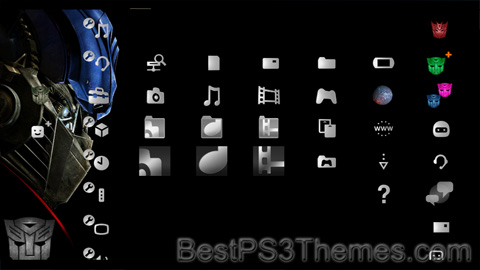
(1 background)
Copyright (c) 2007. Anoop Menon
p3textractor filename.p3t [destination path]Replace filename with the name of the p3t file, and replace [destination path] with the name of the folder you want the files to be extracted to. A destination path is not required. By default it will extract to extracted.filename.DragonBall Z v1.2
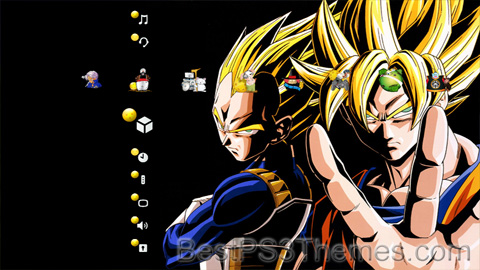
(3 backgrounds)
Copyright (c) 2007. Anoop Menon
p3textractor filename.p3t [destination path]Replace filename with the name of the p3t file, and replace [destination path] with the name of the folder you want the files to be extracted to. A destination path is not required. By default it will extract to extracted.filename.Darkness
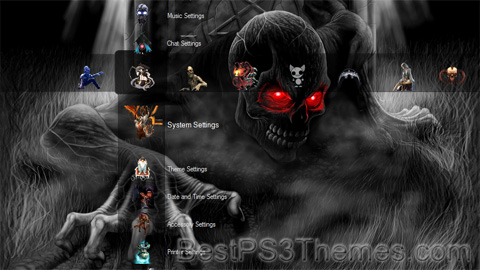
(1 background)

Scientific[edit]
Perception[edit]
Physics[edit]
Technical[edit]
Cultural[edit]
Artistic[edit]

![]()
![]()
Literature[edit]

Religion[edit]
Philosophy[edit]
Poetry[edit]
Language[edit]
See also[edit]
References[edit]
Afterimages are the complementary hue of the adapting stimulus and trichromatic theory fails to account for this fact
[permanent dead link]
External links[edit]

